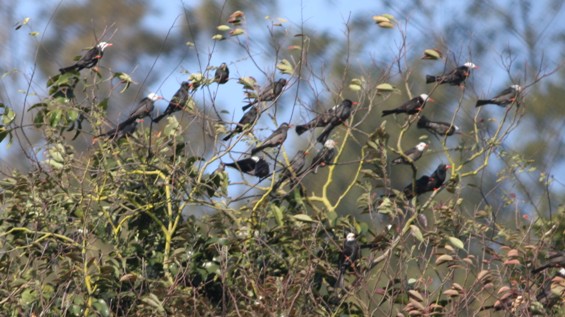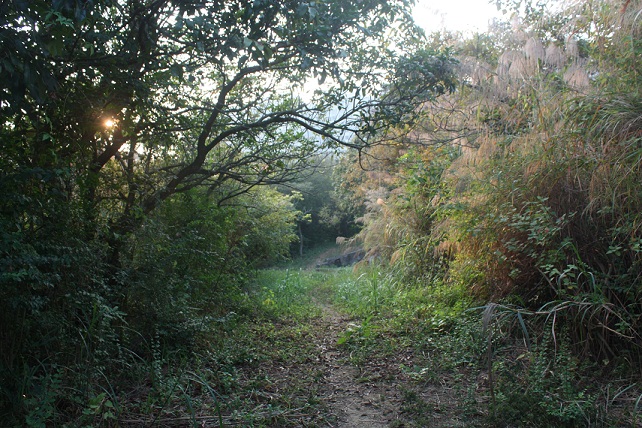Introduction

January usually begins as clear and often sunny during the day. However, there are usually some cold snaps and the temperature usually drops below 10ºc for several nights in the month.
Birds
The month is a good one to look for thrushes and buntings. In 2007 the month began with an influx of unusual birds including two Mugimaki Flycatchers on the jogging trail. During the cold weather snaps there are often more thrushes about and usually many babblers in the gully. Both Pallas's and Yellow-browed warblers are common. Other species to look for include Eurasian Woodcock and Emerald Dove. In 2011 there was an unprecedented influx of Black Bulbuls in a period of cold weather. In 2012 it took a cold snap over the 23-25th January for the thrushes to finally arrive. There was a flock of at least 15 Striated Yuhinas as well as a female Grey Thrush on the small road up to the water tank area behind block 18. In 2013 the weather was cold from the beginning of the month and there were at least 7 Tristram's Buntings present on the jogging trail plus a group of Striated Yuhinas on 5th. Daurian Redtart is an occasional winter visitor and this female on 1st was confiding.
https://www.youtube.com/watch?v=JVYzWztMkmQ
Other Animals
N/A
Plants

Wood Sorrel flowers from the middle of the month onwards. Hong Kong Hawthorn is also usually in flower by the end of January. The Coral Tree
Erythrina speciosa, native to South America, is flowering in January on the hillside just below block 13. The bright red flowers attract Fork-tailed Sunbirds and Japanese White-eyes in particular. Fragrant Litsea
Litsea cubeba is one of the most uplifting sights in January as the tree is covered in creamy-white flowers.
Butterflies and Moths
There are few butterflies and moths about during this month.
Other Insects
An Orange-tailed Sprite
Ceriagrion auranticum on January 20 2012 on cabbages in the garden seemed unusual for this time of year.
 January usually begins as clear and often sunny during the day. However, there are usually some cold snaps and the temperature usually drops below 10ºc for several nights in the month.
January usually begins as clear and often sunny during the day. However, there are usually some cold snaps and the temperature usually drops below 10ºc for several nights in the month.
 Wood Sorrel flowers from the middle of the month onwards. Hong Kong Hawthorn is also usually in flower by the end of January. The Coral Tree Erythrina speciosa, native to South America, is flowering in January on the hillside just below block 13. The bright red flowers attract Fork-tailed Sunbirds and Japanese White-eyes in particular. Fragrant Litsea Litsea cubeba is one of the most uplifting sights in January as the tree is covered in creamy-white flowers.
Wood Sorrel flowers from the middle of the month onwards. Hong Kong Hawthorn is also usually in flower by the end of January. The Coral Tree Erythrina speciosa, native to South America, is flowering in January on the hillside just below block 13. The bright red flowers attract Fork-tailed Sunbirds and Japanese White-eyes in particular. Fragrant Litsea Litsea cubeba is one of the most uplifting sights in January as the tree is covered in creamy-white flowers.